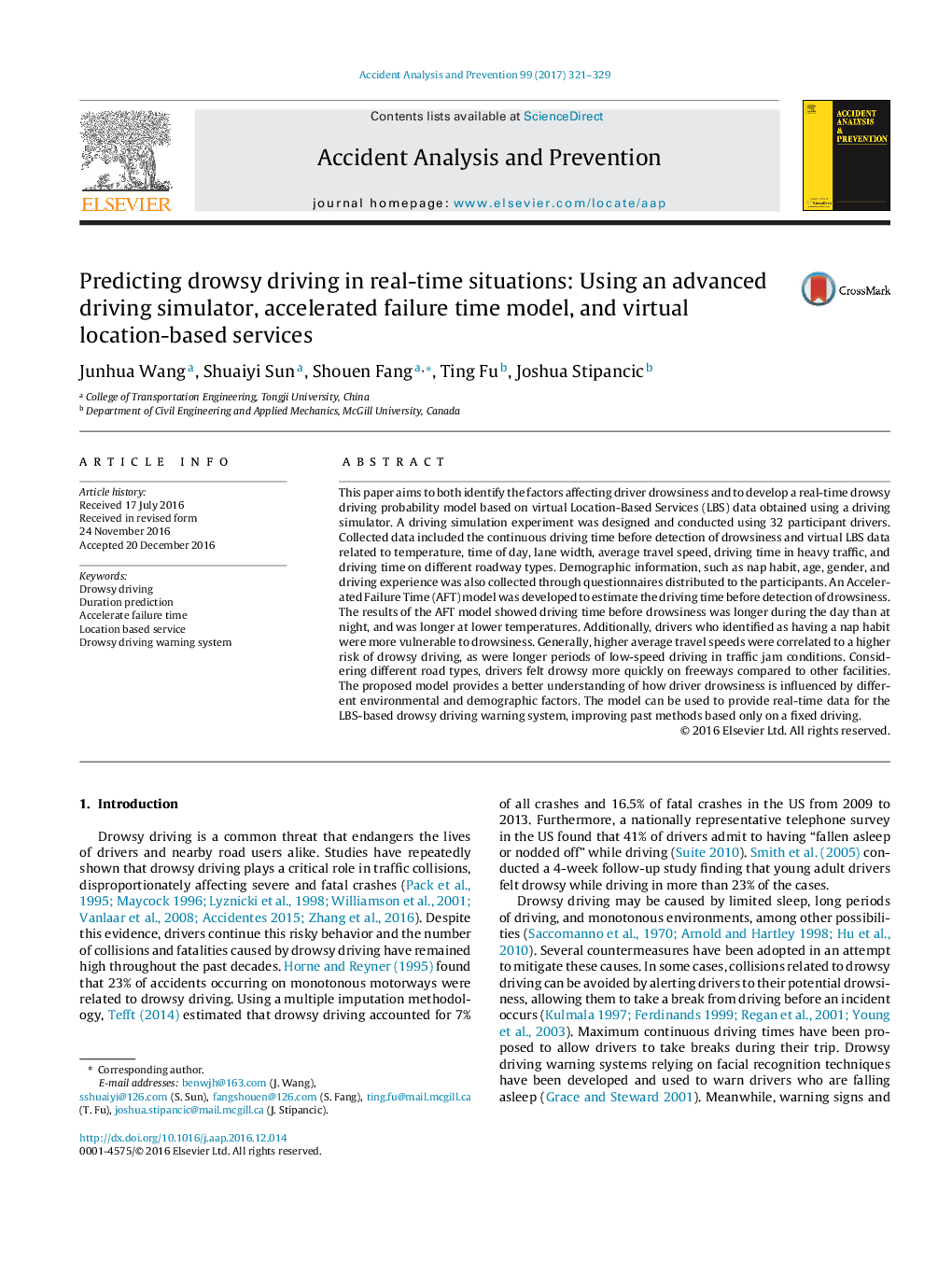| Article ID | Journal | Published Year | Pages | File Type |
|---|---|---|---|---|
| 4978890 | Accident Analysis & Prevention | 2017 | 9 Pages |
Abstract
This paper aims to both identify the factors affecting driver drowsiness and to develop a real-time drowsy driving probability model based on virtual Location-Based Services (LBS) data obtained using a driving simulator. A driving simulation experiment was designed and conducted using 32 participant drivers. Collected data included the continuous driving time before detection of drowsiness and virtual LBS data related to temperature, time of day, lane width, average travel speed, driving time in heavy traffic, and driving time on different roadway types. Demographic information, such as nap habit, age, gender, and driving experience was also collected through questionnaires distributed to the participants. An Accelerated Failure Time (AFT) model was developed to estimate the driving time before detection of drowsiness. The results of the AFT model showed driving time before drowsiness was longer during the day than at night, and was longer at lower temperatures. Additionally, drivers who identified as having a nap habit were more vulnerable to drowsiness. Generally, higher average travel speeds were correlated to a higher risk of drowsy driving, as were longer periods of low-speed driving in traffic jam conditions. Considering different road types, drivers felt drowsy more quickly on freeways compared to other facilities. The proposed model provides a better understanding of how driver drowsiness is influenced by different environmental and demographic factors. The model can be used to provide real-time data for the LBS-based drowsy driving warning system, improving past methods based only on a fixed driving.
Related Topics
Physical Sciences and Engineering
Chemical Engineering
Chemical Health and Safety
Authors
Junhua Wang, Shuaiyi Sun, Shouen Fang, Ting Fu, Joshua Stipancic,
